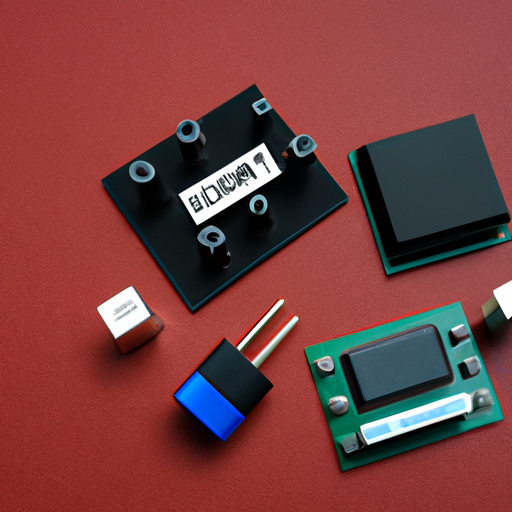Market Policies for Integrated Circuits: Navigating the Complex Landscape
I. Introduction
Integrated circuits (ICs) are the backbone of modern electronics, enabling the functionality of everything from smartphones to sophisticated computing systems. These tiny chips, which house thousands to millions of transistors, have revolutionized technology and continue to drive innovation across various sectors. As the demand for ICs grows, so does the complexity of the market policies that govern their production, distribution, and use. This blog post explores the multifaceted market policies affecting the integrated circuit industry, providing insights into their historical context, regulatory frameworks, trade policies, intellectual property rights, competition policies, economic considerations, environmental policies, and future trends.
II. Historical Context
The integrated circuit market has undergone significant evolution since its inception in the late 1950s. The first ICs were developed to reduce the size and cost of electronic devices, paving the way for the miniaturization of technology. Key milestones, such as the introduction of the microprocessor in the 1970s, marked the beginning of a new era in computing. Historical policies, including government funding for research and development, played a crucial role in fostering innovation within the IC sector. The establishment of organizations like the Semiconductor Industry Association (SIA) further facilitated collaboration among industry players, shaping the market landscape we see today.
III. Regulatory Framework
The global regulatory framework for integrated circuits is complex, involving various international and national bodies. Organizations such as the International Telecommunication Union (ITU), the Federal Communications Commission (FCC), and the European Commission (EC) set standards and regulations that impact the IC market. National regulations vary significantly; for instance, the United States has a more laissez-faire approach compared to the European Union, which emphasizes stringent compliance and environmental standards.
Compliance with regulations is essential for IC manufacturers. Quality assurance measures ensure that products meet safety and performance standards, while environmental regulations address the ecological impact of manufacturing processes. As the industry evolves, so too do the regulations, necessitating continuous adaptation by companies operating in this space.
IV. Trade Policies
Trade policies significantly influence the integrated circuit market, particularly through tariffs and trade barriers. Tariffs can increase the cost of ICs, affecting pricing and competitiveness in global markets. Trade agreements, such as the United States-Mexico-Canada Agreement (USMCA), can facilitate smoother trade flows, while also imposing certain restrictions that companies must navigate.
Export controls are another critical aspect of trade policy, often driven by national security concerns. Governments may impose restrictions on the export of advanced technologies, including ICs, to prevent sensitive information from falling into the hands of adversaries. Import regulations, including customs duties and licensing requirements, further complicate the landscape, requiring manufacturers to stay informed about the legalities of cross-border trade.
V. Intellectual Property Rights (IPR)
Intellectual property rights (IPR) are vital for fostering innovation in the integrated circuit industry. Patent laws protect the inventions and designs of IC manufacturers, incentivizing research and development. However, the enforcement of IPR can be challenging, particularly in a global market where jurisdictions differ significantly.
Case studies of IPR disputes, such as those between major semiconductor companies, highlight the complexities of protecting intellectual property in a rapidly evolving industry. These disputes can have far-reaching implications, affecting market dynamics and the pace of innovation.
VI. Market Competition Policies
Competition policies play a crucial role in maintaining a healthy market environment for integrated circuits. Antitrust laws are designed to prevent monopolistic practices that can stifle innovation and limit consumer choice. The IC sector has seen numerous mergers and acquisitions, prompting scrutiny from competition authorities to ensure that market power remains balanced.
The impact of monopolistic practices can be detrimental, leading to reduced competition and innovation. Policymakers must strike a balance between allowing companies to grow through mergers while preventing the formation of monopolies that could harm the industry in the long run.
VII. Economic Policies
Economic policies significantly influence the integrated circuit market, with governments often providing incentives and subsidies to promote growth. Research and development grants, along with tax incentives for IC manufacturers, encourage innovation and investment in the sector.
The economic impact of the IC industry is substantial, contributing to job creation and overall GDP growth. As the demand for advanced technologies continues to rise, the importance of a robust IC sector becomes increasingly evident. Global supply chain considerations also play a role, as manufacturers must navigate the complexities of sourcing materials and components from various regions.
VIII. Environmental Policies
Sustainability is becoming a critical focus in the integrated circuit industry, with manufacturers increasingly adopting environmentally friendly practices. Regulations on electronic waste are essential to mitigate the ecological impact of discarded devices, while initiatives for green technology in IC production aim to reduce energy consumption and waste.
As consumers become more environmentally conscious, companies that prioritize sustainability may gain a competitive edge. The integration of eco-friendly practices into manufacturing processes not only addresses regulatory requirements but also aligns with the values of a growing segment of the market.
IX. Future Trends and Challenges
The integrated circuit market is poised for significant changes in the coming years, driven by emerging technologies such as artificial intelligence, 5G, and the Internet of Things (IoT). These advancements will necessitate adaptive market policies that can accommodate rapid innovation while ensuring fair competition and consumer protection.
Global geopolitical factors, including trade tensions and national security concerns, will also shape the future of the IC market. Policymakers must remain vigilant in addressing these challenges to foster a stable and competitive environment for integrated circuit manufacturers.
X. Conclusion
In conclusion, the market policies governing integrated circuits are multifaceted and continually evolving. From regulatory frameworks and trade policies to intellectual property rights and environmental considerations, each aspect plays a crucial role in shaping the industry. As the demand for integrated circuits continues to grow, the importance of adaptive policies that promote innovation, competition, and sustainability cannot be overstated. The future outlook for the integrated circuit market will depend on the ability of stakeholders to navigate these complexities and embrace the opportunities that lie ahead.






